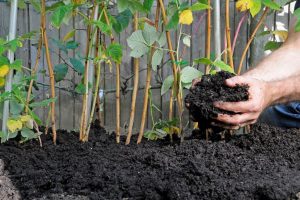
Espalier, a horticultural technique dating back to the 16th century, involves training trees to grow in flat planes against a support, usually in symmetrical patterns. This method was initially developed in Europe to promote fruit production within the limited space of monastery gardens. Today, it finds its place in the compact gardens of Britain, offering not just a solution to space constraints but also an aesthetic appeal and easier access to fruit.
Choosing the Right Trees for British Climates
The success of espalier fruit trees in urban gardens largely depends on selecting species and varieties that are well-suited to the British climate. Apples and pears are the traditional choices, thanks to their resilience and the variety of cultivars available, each with its unique flavor and resistance to local pests and diseases. Plums, cherries, and even peaches can also be espaliered, although they may require more care and suitable microclimates to thrive.
When searching for an espalier fruit tree for sale, consider the rootstock, which influences the tree’s final size and its adaptability to espalier training. Dwarf and semi-dwarf rootstocks are preferred for urban gardens, as they naturally limit the tree’s growth, making it easier to manage.
Getting Started: Planting and Initial Training
Planting an espalier fruit tree starts with selecting a suitable location. South or west-facing walls or fences are ideal, as they provide ample sunlight, essential for fruit production. Ensure the site has well-drained soil and is not prone to waterlogging, which can damage the tree’s roots.
The initial training of espalier trees is crucial. After planting, choose a training system based on the tree’s natural growth habit and your aesthetic preferences. The most common forms include the horizontal cordon, fan, and Belgian fence. Each shape requires different pruning and training techniques but generally involves securing the tree’s branches to wires or trellises as they grow, guiding them into the desired form.
Year-Round Care for Optimal Growth
Espalier fruit trees require regular maintenance to ensure their health and productivity. Pruning is the most critical task, performed to remove unwanted growth, encourage fruiting spurs, and maintain the tree’s shape. Winter pruning focuses on shaping the tree and encouraging the growth of new fruiting wood, while summer pruning controls unwanted growth and directs energy into fruit development.
Feeding and watering are also vital, especially in the dry periods typical of British summers. A balanced, slow-release fertilizer applied in early spring supports healthy growth and fruit production. Regular watering, particularly for trees against walls or fences, ensures that they do not dry out.
Pest and Disease Management
Like all fruit trees, espaliers are susceptible to pests and diseases. However, the open and accessible nature of espalier trees makes monitoring and managing these issues easier. Common pests include aphids, caterpillars, and red spider mites, while diseases such as powdery mildew and fire blight can also pose challenges. Integrated pest management strategies, including regular inspections, biological controls, and targeted treatments with eco-friendly products, are effective in maintaining healthy trees.
The Benefits of Espalier Fruit Trees in Urban Gardens
Espalier fruit trees offer multiple benefits for urban gardeners. They maximize the use of limited space, allowing for the cultivation of a variety of fruit in areas that might otherwise be considered too small for fruit trees. Their decorative aspect also enhances the aesthetic appeal of urban gardens, turning functional spaces into beautiful green retreats.
Moreover, espalier trees can contribute to the microclimate of urban gardens, providing shade and cooling effects that improve the overall garden environment. They also offer a sense of privacy and can act as green barriers, reducing noise pollution and improving air quality.
This article has introduced the art and practice of espalier fruit trees as a creative and efficient approach to urban gardening in Britain. By choosing the right species, providing careful planting and training, and maintaining these trees with attention to pruning, feeding, and pest management, urban gardeners can enjoy the myriad benefits of espalier fruit trees.
Advanced Espalier Techniques: Beyond the Basics
As gardeners become more proficient with basic espalier shapes, they might explore more complex designs, such as the U-shape, Belgian fence, and even intricate patterns like the candelabra. These advanced forms not only challenge the gardener’s skill but also create stunning visual impacts in the garden. Achieving these sophisticated shapes requires a deep understanding of the tree’s growth habits, patience, and meticulous care through selective pruning and training over several years.
Seasonal Care for Year-Round Beauty and Bounty
To ensure that espalier fruit trees remain both productive and visually appealing throughout the year, seasonal care is paramount. In spring, focus on supporting new growth with adequate watering and the application of mulch to retain soil moisture and suppress weeds. This is also the time for planting new trees, before they break dormancy.
Summer is crucial for pruning to maintain shape and promote air circulation within the tree canopy, which helps prevent disease. It’s also the season for thinning fruit to ensure that the remaining ones grow to a healthy size.
Autumn preparations involve cleaning up fallen leaves and fruit, which could harbor pests or diseases, and applying a layer of compost to nourish the tree over the winter. It’s also a good time to install or check support structures for any needed repairs or adjustments.
Winter, while the tree is dormant, is ideal for the main structural pruning. Removing dead or diseased wood and shaping the tree prepares it for the next growing season, promoting healthier growth and better fruit yield.
Espalier Trees and Urban Biodiversity
Espalier fruit trees do more than just beautify urban spaces and provide fresh produce; they also play a vital role in supporting urban biodiversity. By attracting pollinators such as bees, butterflies, and birds, these trees contribute to the health of urban ecosystems. They offer food and shelter to a variety of species, enhancing local biodiversity and building resilience against environmental stresses.
Fostering Community Through Espalier Gardening
Espalier fruit trees can foster a sense of community among urban dwellers. Community gardens and shared spaces often incorporate espalier trees as focal points for beauty and gatherings. These gardens become places of learning and connection, where people share knowledge about gardening, nature, and the importance of local food production. They encourage community interaction, promoting well-being and a shared sense of ownership and responsibility for the local environment.
Conclusion
Espalier fruit trees represent a marriage of beauty, functionality, and sustainability, making them a perfect fit for the urban garden landscape in Britain. Through careful selection, training, and maintenance, these living sculptures provide not only fruit but also beauty, shade, and a habitat for wildlife, enriching urban life in myriad ways. As urban gardeners embrace this ancient practice, they contribute to a greener, more sustainable urban future, demonstrating that even in the heart of the city nature can thrive.





